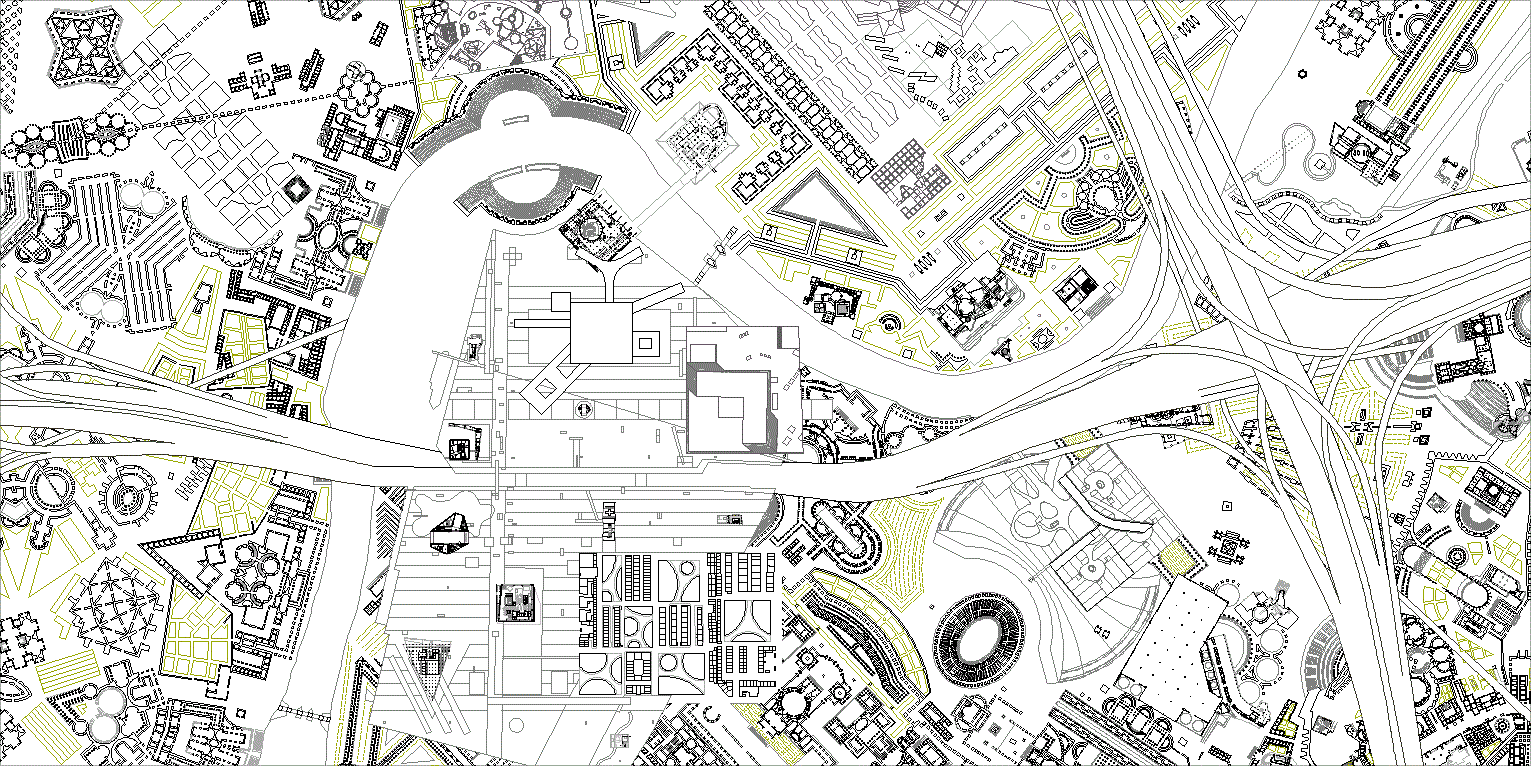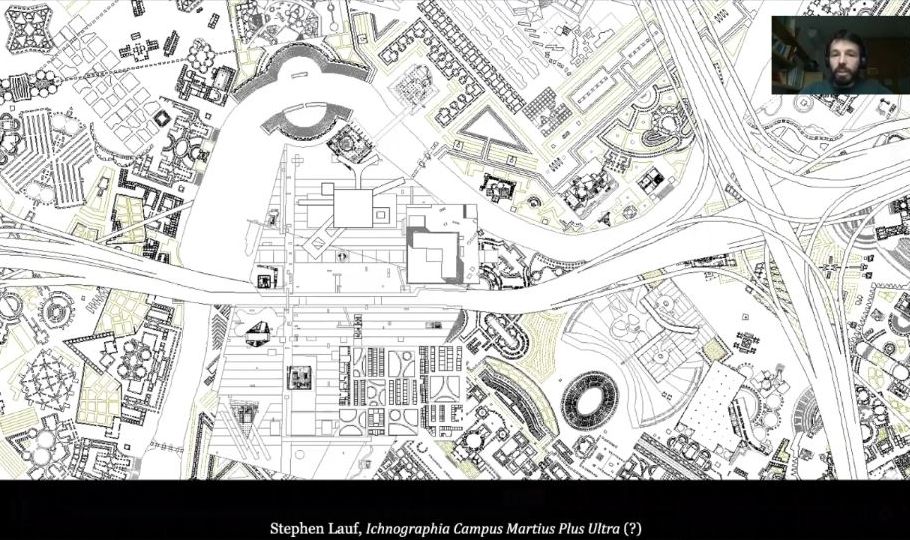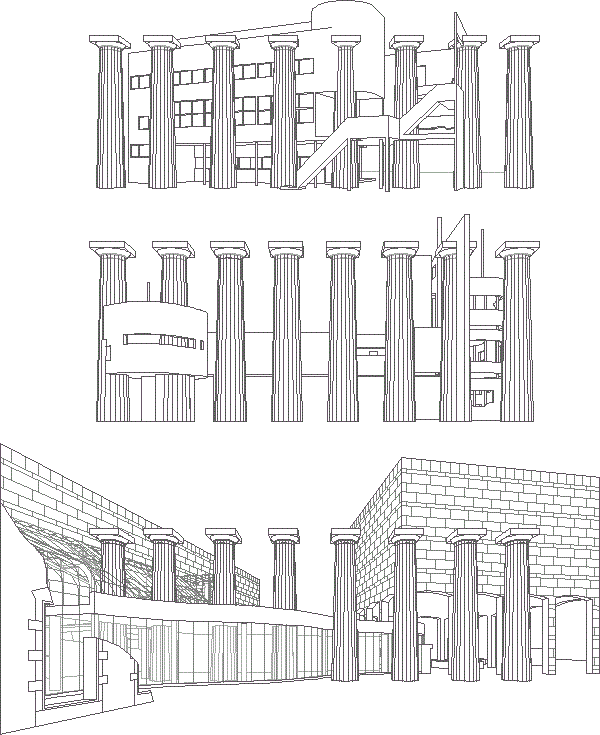LeDeuzzy, Q. |
|
| Quite interestingly I somehow stumbled across, by pure chance, on an author whose webpage starts with a drawing which is a clear and obvious quotation and reference of Piranesi's Campo Marzio. This author is Stephen Lauf. He's an American architect who in the 1990s apparently was among the first ones to interrogate in a very peculiar |
|
| way, I have to say, the new design tools which were introduced by the computer in the field of architecture. We know, I mean we are all quite acquainted with the story of the direction digital architecture took, the productions of blobs, continuity instead of fragmentation, the fluid form instead of the montage, and so on and so forth. But the point is that is not the only story, not the only history of digital architecture. There's also a history, I think we could say of digital architecture which took a rather different path which is precisely the path indicated by this early work of Stephen Lauf who, rather than experimenting with blobs and what would then become said parametric architecture, started to investigate the capacity of cad software to reduce all architectural history basically into vector files which can then be recombined in order to obtain new and unexpected wholes. Precisely in the same way that Piranesi and John Soane and Furman did with their own works. |
|
|
|
stumbled across
|
architect who in the 1990s apparently was among the first ones to interrogate in a very peculiar way, I have to say, the new design tools which were introduced by the computer in the field of architecture. . . Although I was first trained in 2D and 3D Intergraph cadd while working for Cooper and Pratt Architects in 1983, I did not have my own 2D and 3D cad system, Arris, until April 1987. From 1987 to 1990 I worked as Arcadia - Architectural Cad Services, but business evaporated with the recession of 1990. From 1991 onward I used my cad system for purely creative endeavors.
|
investigate the capacity of cad software to reduce all architectural history basically into vector files which can then be recombined in order to obtain new and unexpected wholes. . .
|
|
|
|
|
|
www.quondam.com/90/9008d.htm | Quondam © 2021.10.06 |


